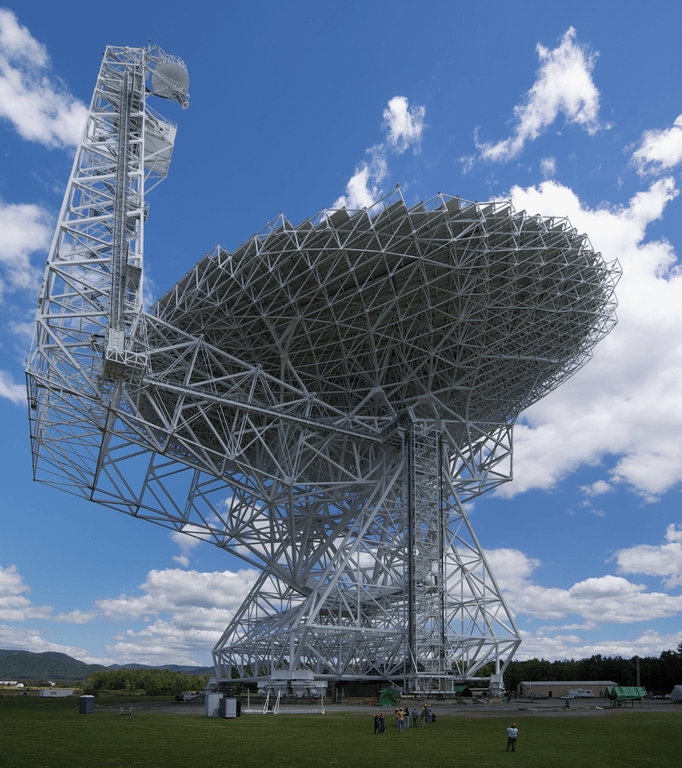Breakthrough Listen, a program that is looking for aliens throughout the universe, has detected 72 new fast radio bursts thanks to an applied machine learning algorithm. The fast radio bursts (FRBs) are coming from the “repeater” FRB 121102.
FRBs are bright pulses of radio waves which last only a couple of milliseconds and originate from faraway galaxies. While most FRBs are detected only during a single outburst, the fast radio bursts of 121102 repeat themselves, making it the only source that emits repeated bursts, including 21 detected bursts from last year’s Green Bank Telescope (GBT) in West Virginia by Breakthrough Listen.
The team working on this study doesn’t know where the repeated FRBs really come from, or what their mechanism is. Studies that were previously working on fast radio bursts concluded that 121102 emits a signal from a galaxy located 3 billion light years away from us, but that’s as far as the study goes.
“Not all discoveries come from new observations,” said Pete Worden, executive director of Breakthrough Initiatives, in a press release. “In this case, it was smart, original thinking applied to an existing dataset. It has advanced our knowledge of one of the most tantalizing mysteries in astronomy.”
To understand the new fast radio bursts better, the Breakthrough Listen team at the SETI Research Center at University of California, Berkeley observed FRB 121102 on Aug. 26, 2017. They used the Breakthrough Listen digital instrumentation at the GBT. Led by Berkeley SETI postdoctoral researcher Vishar Gaijar, the team analyzed 400 TB of data and reported it in a paper published in the Astrophysical Journal. The 21 fast radio bursts were all seen within one hour, which suggests that whatever the source of FRB 121102 is, it demonstrated a period of excessive activity.
UC Berkeley Ph.D. student Gerry Zhang and his team developed a machine learning algorithm to analyze the 2017 GBT dataset, which resulted in the discovery of 72 new fast radio bursts that weren’t previously detected. The technique the team used resembles algorithms used to optimize search results on search engines and to classify images.
The team trained an artificial intelligence algorithm called a convolutional neural network, which could detect bursts found by the search method Gaijar and the collaborators used. The results from the AI give an insight of the periodicity of the pulses that came from 121102 and suggest it’s not always the same patterns that determine when the outbursts happen.
“This work is only the beginning of using these powerful methods to find radio transients,” Zhang said. “We hope our success may inspire other serious endeavors in applying machine learning to radio astronomy.”
“Gerry’s work is exciting not just because it helps us understand the dynamic behavior of FRBs in more detail, but also because of the promise it shows for using machine learning to detect signals missed by classical algorithms,” remarked Dr. Andrew Siemion, Berkeley SETI research center director and principal investigator for Breakthrough Listen.
The results were accepted for publication in the Astrophysical Journal. The pre-print of that paper and animated imagery of the detected bursts and the rest of the analysis can be found here.





